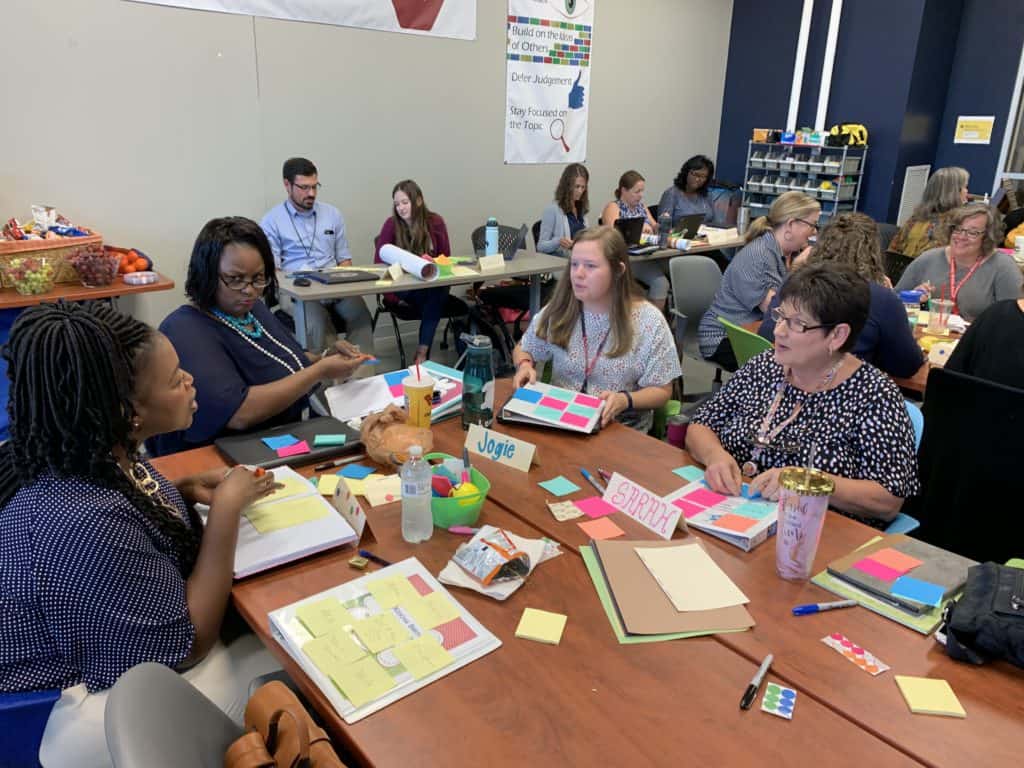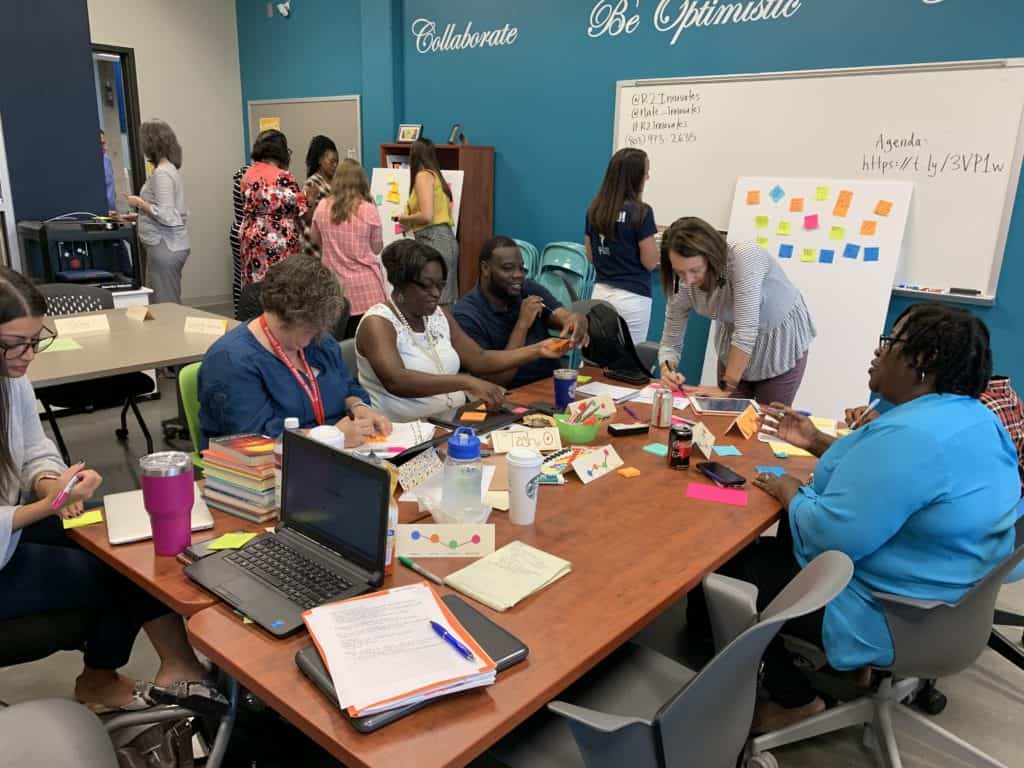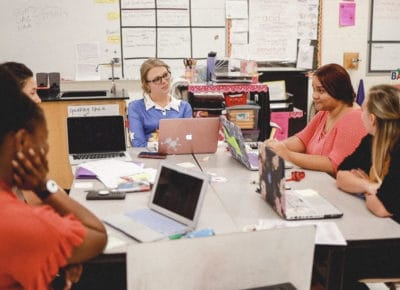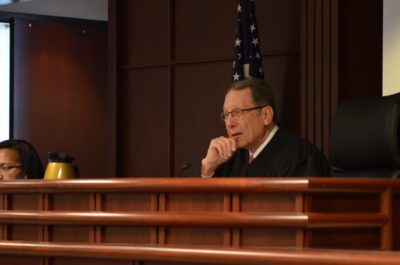

Innovation is everywhere. A recent Google search of the term reveals “about 3,390,000,000 results” in 0.59 seconds. How puzzling it is to think that less than a year ago, while serving as principal at Whitnel Elementary School in Caldwell County, the “I” word rarely crossed my mind.
I am not saying that innovation was not taking place in my school or district. I just had not consciously given name to those out-of-the-box ideas and undertakings that happen in classrooms and schools across North Carolina every day. That all changed in June 2019 when I was named Caldwell County Schools’ coordinator of innovation and online education and tasked with promoting innovative educational practices to support all learners, including home-schoolers, in our district. Thus began my deep-dive into understanding innovation and its implications for transforming schools.
What do you do?
The position — coordinator of innovation and online education — is in itself innovative. In Caldwell County Schools, it is the first of its kind. Since transitioning to my new position, many of my conversations with fellow educators, community members and friends have gone something like this:
Colleague: “Congratulations on your new role! Where are you now?”
Me: “Well — my position is called coordinator of innovation and online education, and I work at the district level.”
There’s a pause, a look of puzzlement and curiosity, a few seconds of processing time, and then, the inevitable query: “So, what do you do?”
These exchanges, albeit somewhat awkward, open the door to incredible conversations. Excitement that feels electric is generated as I share the five broad objectives of the CCS Department of Innovation and Online Education and spend a few moments in a give-and-take reflecting on how these objectives encourage new ways of thinking about and doing school.
Frequently, conversations reveal personal stories of students who would benefit from non-traditional learning experiences and center around what changes would be necessary for our schools to provide these experiences to students. Without fail, questions arise about how our ideations can become reality. These unanswered questions drive me to understand how to cultivate a pervasive culture of innovation that leads to the best possible outcome for every Caldwell County student.


Nathan O’Neill
In search of innovators
Networking has been a lifeline on my quest to understand the role that innovation plays in transforming our schools. Over the past few months, I have spent a great deal of time in search of colleagues who are passionate about the power of innovation to improve education.
I have discovered a small but mighty network of innovators from diverse backgrounds. These innovators are student-focused, passionate about equity, and intent on making a positive impact on educational experiences. They practice open sharing of ideas and have willingly included me in their journeys. I am grateful.
Among these innovation advocates are Sylvia Anthony-McGeachy, Wallace Grant Coordinator, and Erin Swanson, director of innovation, both of whom work in Edgecombe County Public Schools. Thanks to their hospitality, I visited Edgecombe County where innovation is visibly transforming schools.
There, I was introduced to Todd Rose’s work, The End of Average, which reinforced my belief that there is a need to re-design how school is done. I watched and learned as Martin Millennium Academy’s design team openly shared ideas and then strategically identified and focused on the perspectives of students and families to drive school improvement conversations during a convening. I felt the passion of their team as they envisioned improving the school experience.
I also traveled to Richland District 2, South Carolina, and witnessed the R2 Innovates Innovation Incubator at work. Guided by Nathan O’Neill, Innovation Program Designer, Richland District 2 teams used the Stanford d.School’s design thinking model to identify and problem-solve for real issues facing their schools. The Innovation Incubator culminated with teams pitching ideas to gain ongoing support for their innovations. I was energized as I felt the power of teams who knew the “why” of their work.
I am especially grateful for ongoing conversations with Dr. Robert Smith, professor in the Watson College of Education at UNC Wilmington and co-founder of the Educational Innovation Network NC. Smith encouraged my efforts to network by facilitating introductions with innovators from the Making Innovation a Priority in NC Schools conference. Insights gained from Dr. Smith and thought leaders, such as Ben Owens, Dr. Aria Chernik,and Mariah Morris have enhanced my ability to cultivate a culture of innovation through design thinking strategies. I am better equipped to lead innovation due to these collaborations.


Nathan O’Neill
We are better together
Watching innovators at work, I have come to know that innovation doesn’t grow from what we have or what we do. Rather, it is rooted in how we think and what we believe. Its heartbeat lives in the core values of open access and collaboration, and its creative energy focuses on the design of equitable systems in support of those who have been marginalized and underrepresented.
The energy I experienced when explaining to others our opportunity to redesign school in Caldwell County is transformative, and there is an eagerness for change to occur. I, too, am incredibly impatient to move innovation forward. But, as I’ve consistently witnessed in my travels, innovation doesn’t happen in isolation.
It happens when individuals ideate together to build better structures that meet the learning needs of all students. This process requires a great deal of self-awareness as we hone our communication skills, gather our resources, and solidify our common beliefs so that we can think about and then do school differently together.
The bottom line? Cultivating a culture of innovation is slow, messy, and requires risks. This culture must be strategically grown, and as many educators recognize, growth is very personal and takes time to root — but is full of promise for the future. It is up to us to transform our schools by becoming a network of innovators. Our students deserve nothing less.
Editor’s note: This piece is part of a week-long series on innovation. Editing support was provided by Dr. Robert Smith and Kayce Smith of UNC-Wilmington’s Watson School of Education.




